The Portuguese Prego
The first thing that the word “Prego” makes me think of is an unfortunately named commercial pasta sauce, and the genre of slack-faced noodle-slurping pregnancy announcement photos that feature a jar of it.

The word Prego in Italian means “You’re welcome,” which has no relevance to either the English-language pun in the above photos or the Portuguese sandwich of the same name. In Portuguese, the word Prego means “nail,” which in this case is a metaphorical description of the way slivers of garlic are pounded into a steak before it’s griddled and served hot on a soft-crumbed, crisp-crusted Portuguese roll. These sandwiches are also popular in Mozambique and South Africa, where there’s a lingering Portuguese influence (note the popular South African chain of restaurants serving Portuguese-style roasted chicken, Nando’s).
In his Lisbon episode of No Reservations, Anthony Bourdain (RIP) was offered a Prego sandwich as a dessert after an extensive meal of various shellfish. This appears to be a Lisbon tradition, possibly owing, as Bourdain speculated during the episode, to the fact that even a several courses of shellfish aren’t going to soak up a night of booze the way a greasy steak on bread will. I’m not much of a sweet tooth guy, so the idea of a savory dessert is something I can get behind.
The blurb about Pregos on Wikipedia’s List of Sandwiches describes the steak as being marinaded in red wine with olive oil, bay leaf, salt, pepper, etc. In the Bourdain show, they simply whack the steak with garlic, throw it on the griddle and drizzle it with olive oil. In the book My Lisbon: A Cookbook from Portugal’s City of Lights, author and chef Nuno Mendes “marinates” the steaks in lard. I’ve read various recipes on the internet and few of them have a marination step. Still, it can’t hurt to have some Portuguese red wine on hand, if not for marinating the steaks then for marinating my liver.
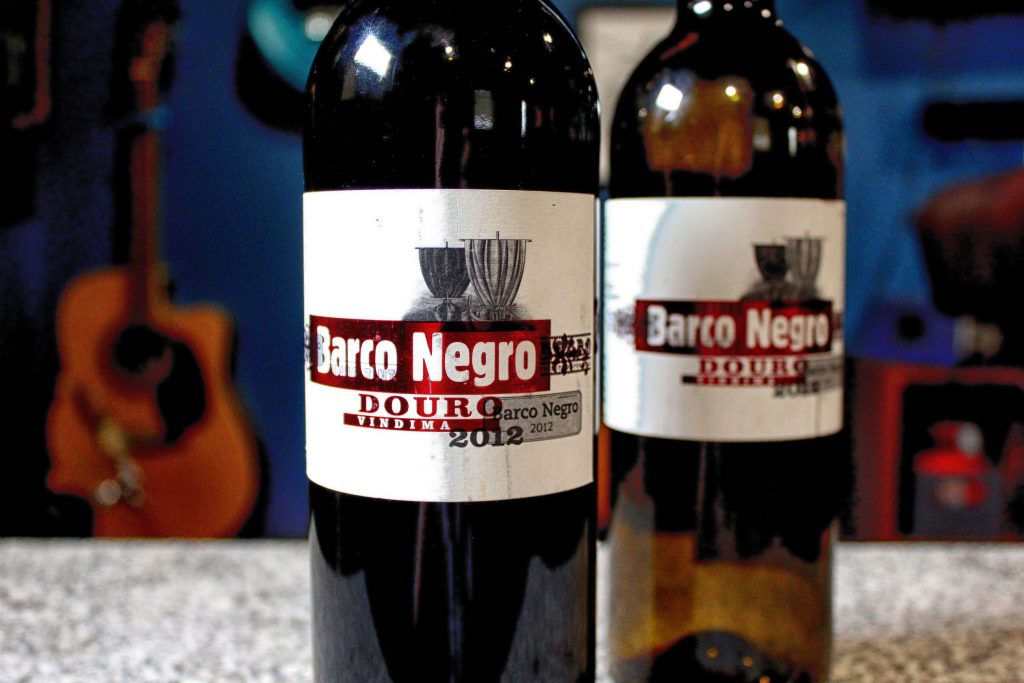
As for the bread, most of the recipes I’ve found simply call for a “soft” or “pillowy” Portuguese bread roll. The Nuno Mendes recipe calls for a sort of sweet potato flatbread. Some of them though will mention Carcaças Rápidas, which appears to be a simplified version of the Papo Seco rolls from last month’s pork chop bun, in which the bread is not shaped as severely and is more of a straightforward round or elongated roll, split on top. I decided to try making these, and they turned out at least as well as or better than last month’s bread. (I’ve been having some problems with my oven maintaining the heat I need it to, which severely impacts my ability to bake good bread. Once I realized that though I was able to keep a closer eye on things and make sure the bread turned out OK)


Given that there are so many variations on the recipe for this sandwich, I decided to make 4 different types: the Nuno Mendes recipe (or at least as close as I could get to it with the materials at hand), a very simple Prego like the one Anthony Bourdain had on No Reservations, a slightly more fancy version with sweet onions sauteed in butter and steak juices, then cooked in my Portuguese red wine, and finally one served with arugula tossed in lemon juice and olive oil, with the steaks marinades in red wine, salt, pepper, and bay leaf. For condiments I am making available my precious African Rhino brand Peri-peri sauce and a Cuban mustard that I hope is at least something like the mild yellow mustard popular in Portugal.
The Nuno Mendes recipe from My Lisbon is unique in that it doesn’t actually use any garlic, which surprised me since that seems to be a defining feature of the sandwich. Instead, he rubs the steak in pork fat and allows it to marinate for 6 hours or overnight, then cooks it in olive oil, basting it with butter (I used melted butter that I’d heated and infused with bay leaf for additional flavor), toasts the rolls in the pan drippings, then adds Iberico ham
the steak, cut into pieces that will fit the roll, lardo (I had to leave it out entirely) and lemon juice, as well as mustard and piri piri oil (my peri peri sauce will have to do).
I made two of each of these sandwiches and shared them with my wife and two of my sons (the third is away for the week) over the course of a day. We had steak sandwiches for breakfast, lunch, afternoon snack, and supper that day.
It’s a tough life being in my family
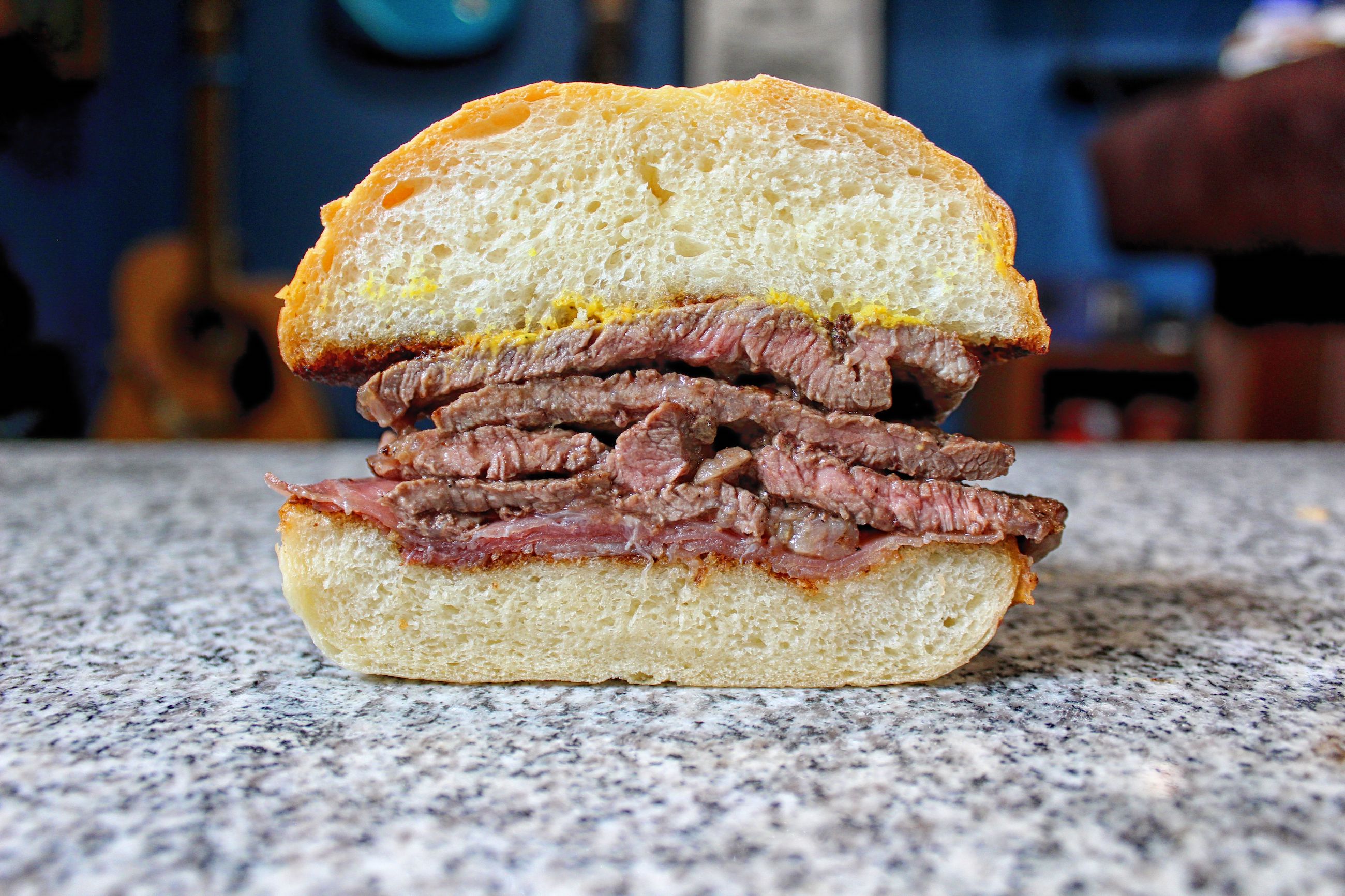


I knocked it out of the park with this sandwich right off the bat. The pork fat had seeped into the steak seemingly, making it very moist and fatty and more tender than the rest of the steaks we ate that day. I missed the garlic (I’d get plenty of that later), but the intensity of the serrano ham with the brightness of the lemon juice and the mild but cutting mustard gave the sandwich a surprising depth of flavor. If I ever get the opportunity to try a Prego that hews closer to the Nuno Mendes version, I will jump at the chance. Ian, our 11 year old, would too, and so would Mindy; for those keeping score, this was their favorite sandwich of the day.
I wanted that garlic though. Next up was a very simple version, with a steak whacked flat with slivers of garlic stuck into it, cooked in olive oil and doused with some more of that bay leaf butter.
Here also I toasted the rolls in the pan drippings. As you may be able to tell, a lot of the garlic did not stay stuck to the steak during cooking, but I rescued what I could and added it to the sandwiches anyway.
These were thin-sliced sirloin steaks, decent but nothing spectacular, and prone to the occasional chewy bits, the non-marinated versions more so. Still, I like the flavor of sirloin, and I like the flavor of garlic that’s been fried in fat, and heck I like the bread I make as well most of the time. These sandwiches were plenty good plain, though the mustard is nice to have to change things up.
With many of these steaks, I made the mistake of trying to get a nice brown color on them and lost the nice pink color I should have tried to keep inside them. It’s possible that they’d have been a bit more tender if they’d been a bit rarer. Still, cooking a steak as thin as this without cooking it through is a tricky proposition on an electric griddle on a July afternoon.
We all liked this sandwich (except Max, the 18 year old, who’d stepped out for a bit with friends when I was serving it) and I’d scarf one in a heartbeat after a long evening drinking beers and eating shellfish, but it wasn’t going to wow anyone and really wasn’t intended to. It was a baseline that we should have done to begin with, if I hadn’t been so greedy to bust out that serrano.
Next up was the sandwich with sauteed onions, an idea which I got from a Youtube video I found while scouring the internet for Prego recipes. I sliced up a couple small sweet onions nice and thin and sauteed them in a combination of pan juices and butter until they were getting soft, then added some of that nice dark red Portuguese wine and cooked it down until the onions had basically soaked it all up.
The steaks, complete with their nails of garlic, went on top of this, then more onions.
Then I figured I would add both the mustard and the peri peri sauce to at least one of these sandwiches to show you how nice they looked.


As nice as they looked, they tasted even better together. Mustard would not necessarily be my first choice for a steak sandwich, though I admit it works here. But the combination of the (relatively, for mustard anyway) mild and sweet mustard along with the hot and savory peri peri sauce is just right for these steaks, and the rich, sweet onions brought this sandwich well out of the ordinary territory we’d been flirting with making the previous, baseline sandwich.
You can see, too, that the onions and the sauces add some juiciness to the sandwich that, while not completely missing from the baseline version, was a welcome upgrade from it.
Finally, I had those steaks I’d been marinating in the wine for nearly 24 hours, and I’d also read an Epicurious account of the sandwich that referenced arugula, so I cooked up another batch of garlic-festooned steaks, tossed some arugula with lemon juice, olive oil, salt and pepper, contemplated mayonnaise or aioli, decided no, and served them just as is.
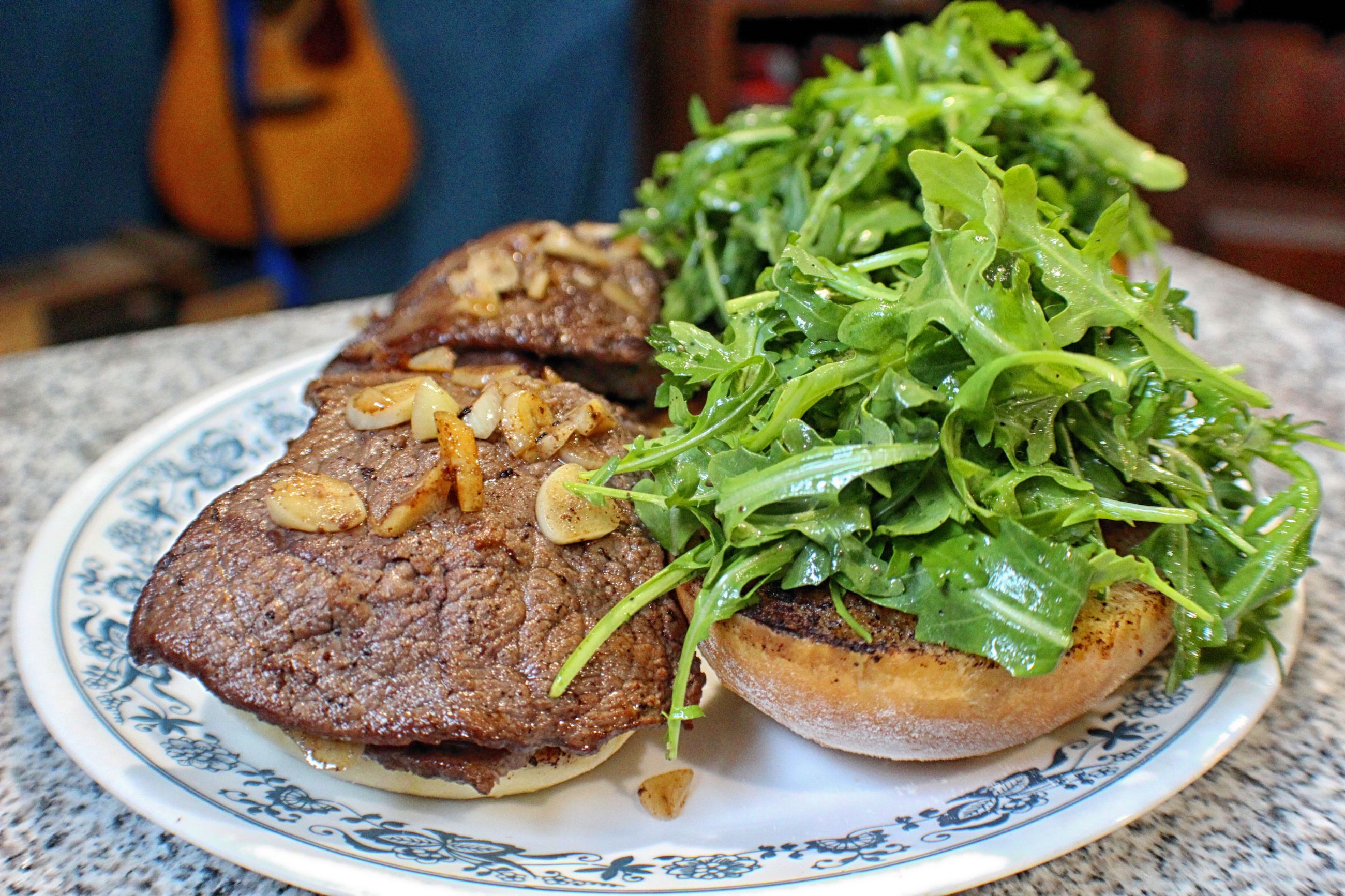


This was 18yo Max’s favorite sandwich of the day, as he felt the sandwich was better balanced with the addition of the greens. I do like arugula, and I think it complemented the steak nicely, as did the light lemon dressing, but the massive pile of arugula necessary to balance the equally massive pile of steak made the sandwich a bit unwieldy. The more I tried to compress the sandwich to keep the arugula under control, the more it just squished out the sides.
Still, the steak was good and tender, the arugula provided a fresh herbaceous flavor highlighted by the fruity olive oil and bright citrus, and the bread was soft but sturdy enough to mostly hold it all together. A day spent eating steak sandwiches by definition cannot be a bad day, and the one disappointment I had on this one was running out of that wine. Next time I find myself in a place with a sizable enough Portuguese (or even South African) population to have places serving this sandwich, I can’t think of too many late night snacks with which I’d rather finish a night out.

I like sandwiches.
I like a lot of other things too but sandwiches are pretty great


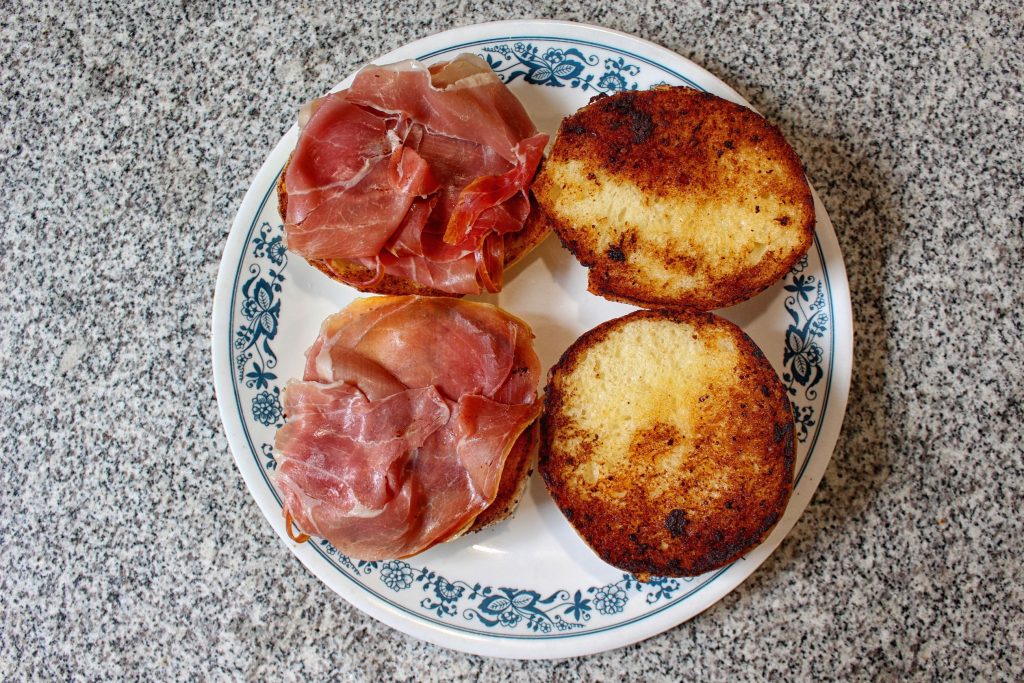
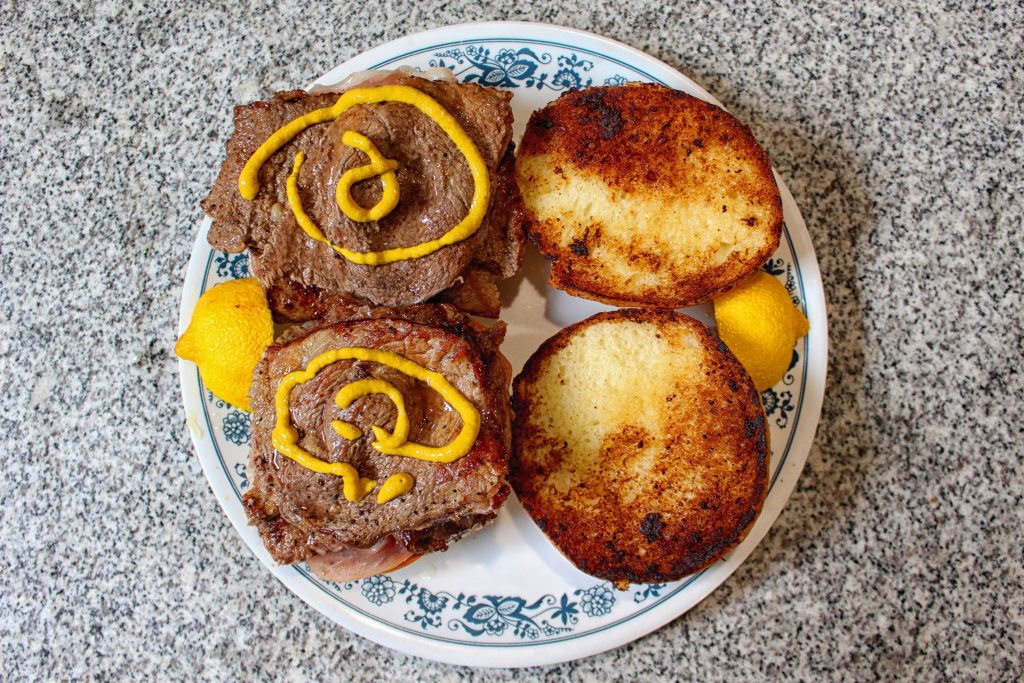
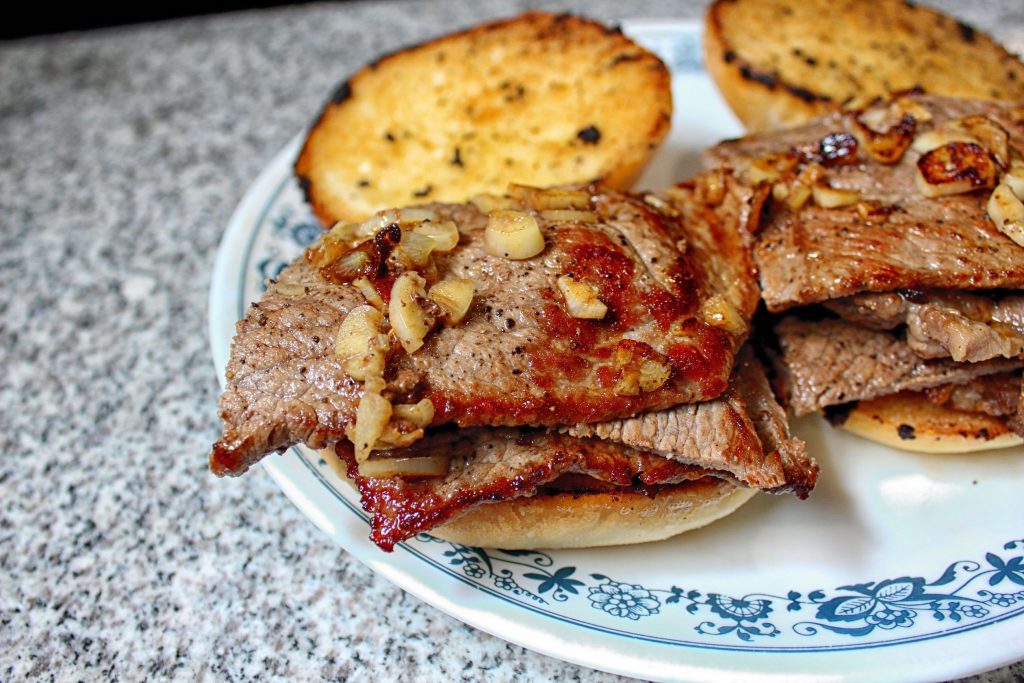
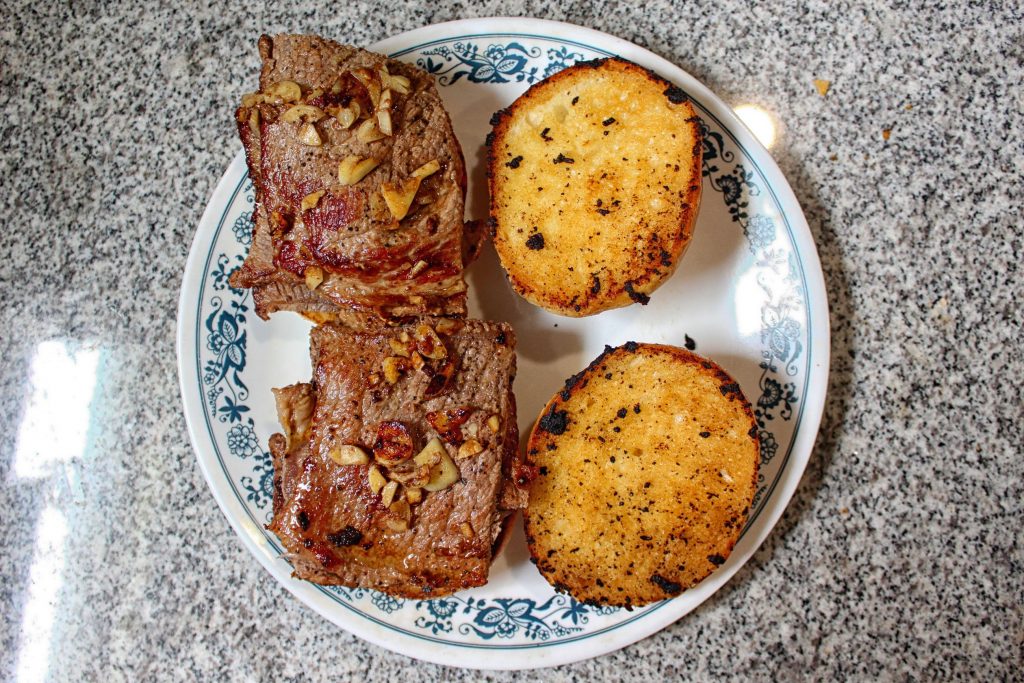
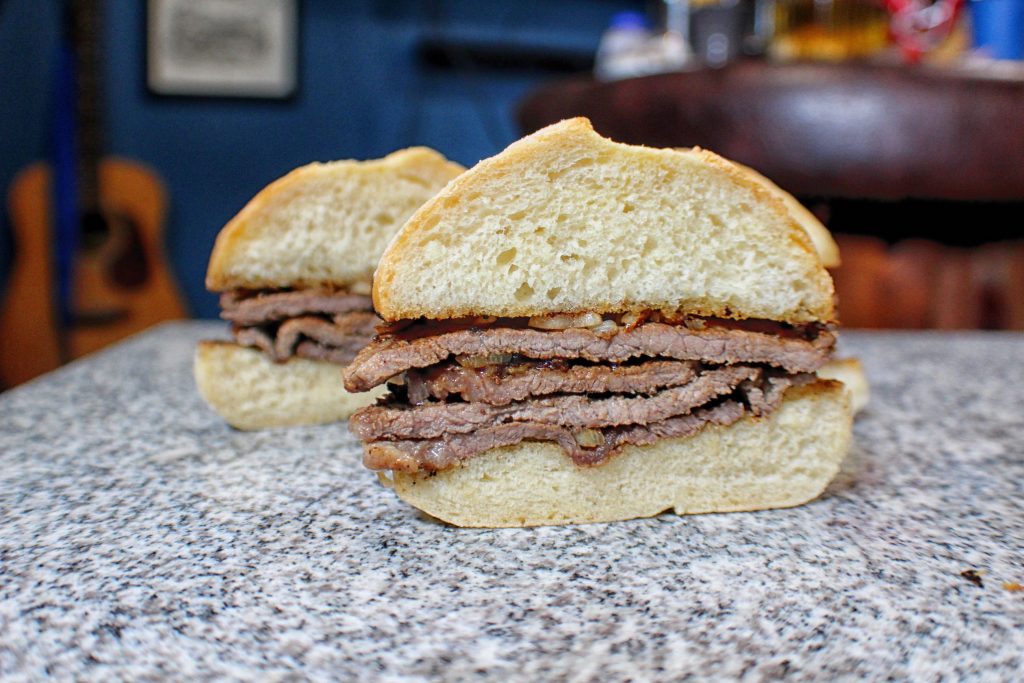
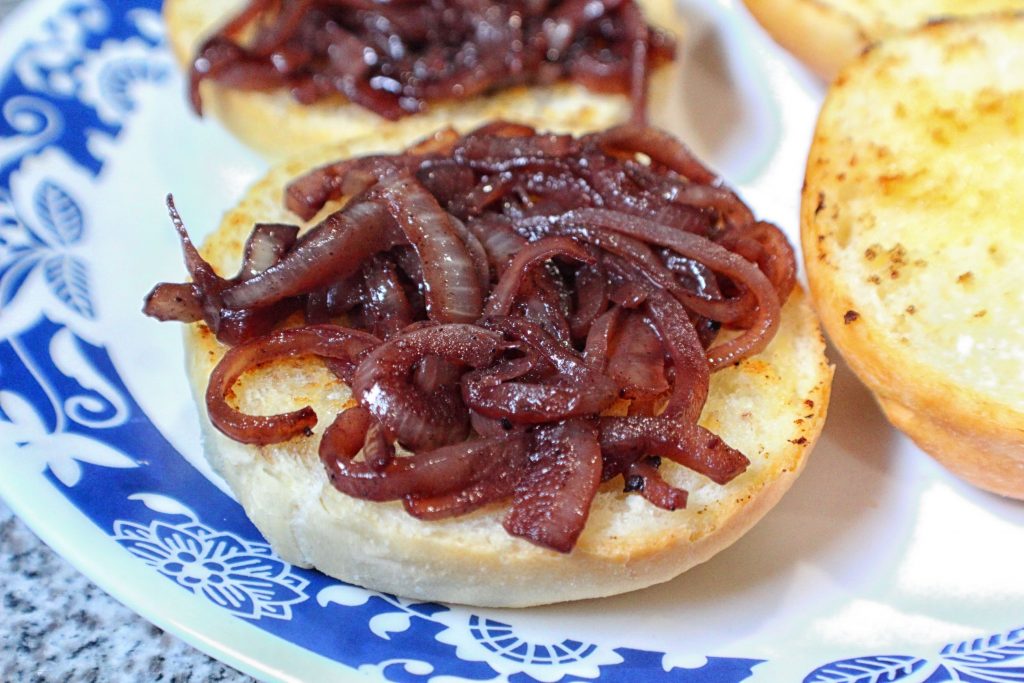
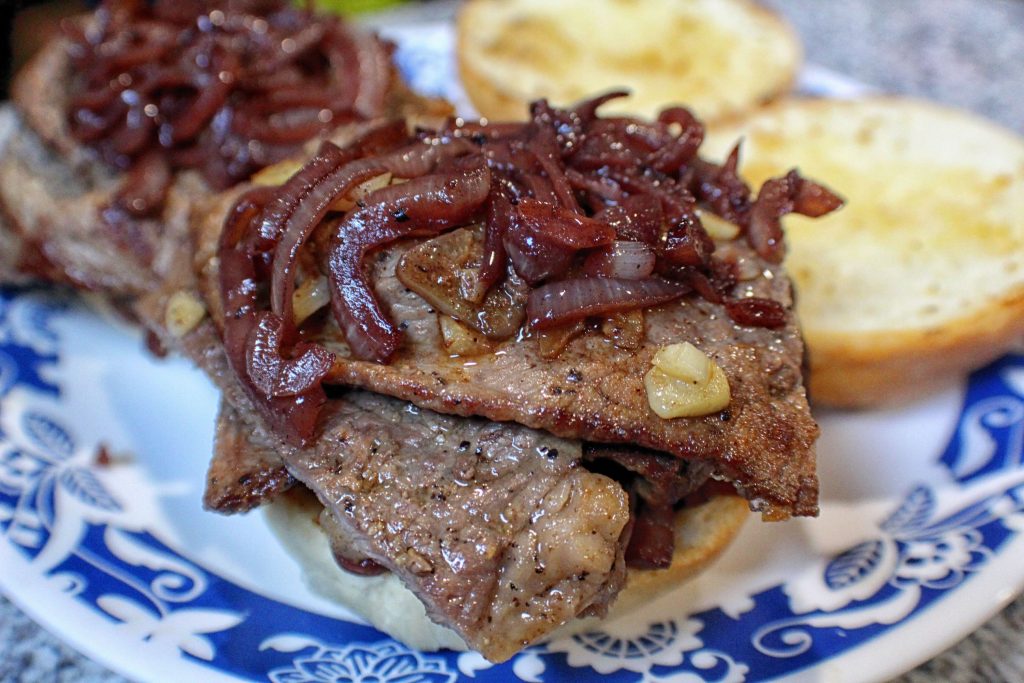
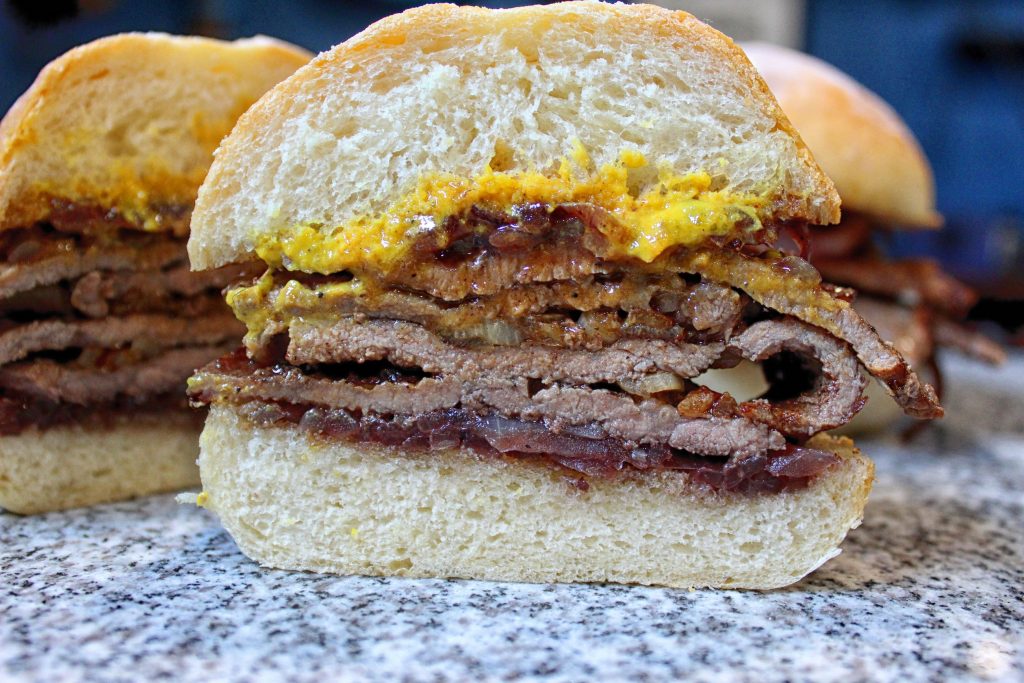
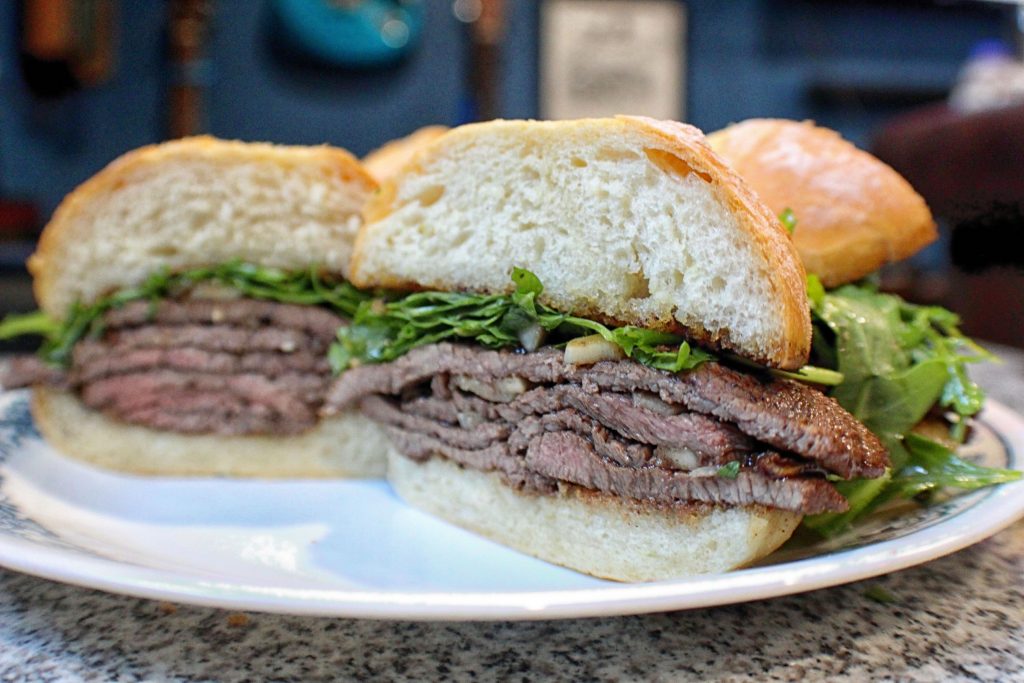
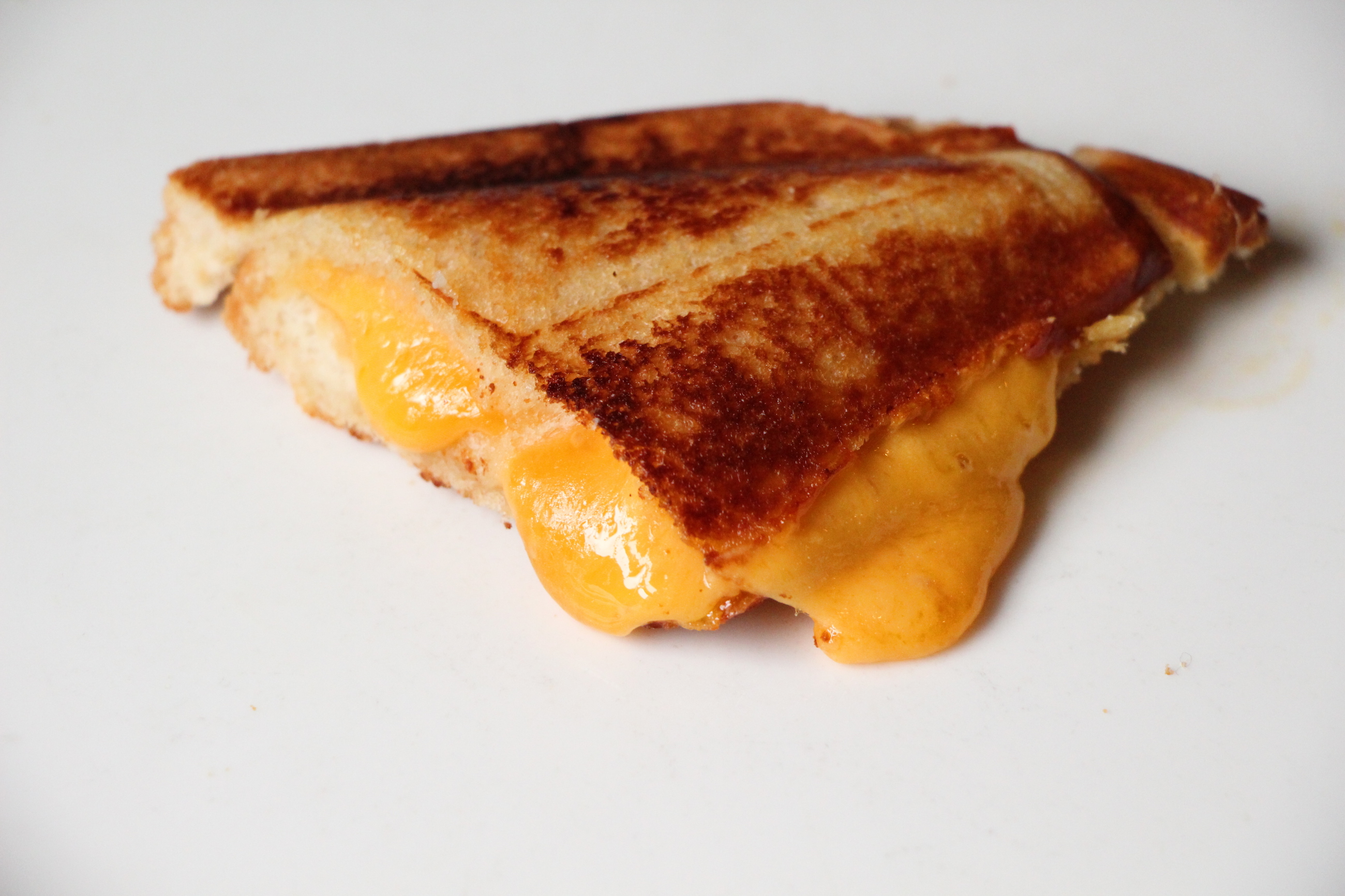
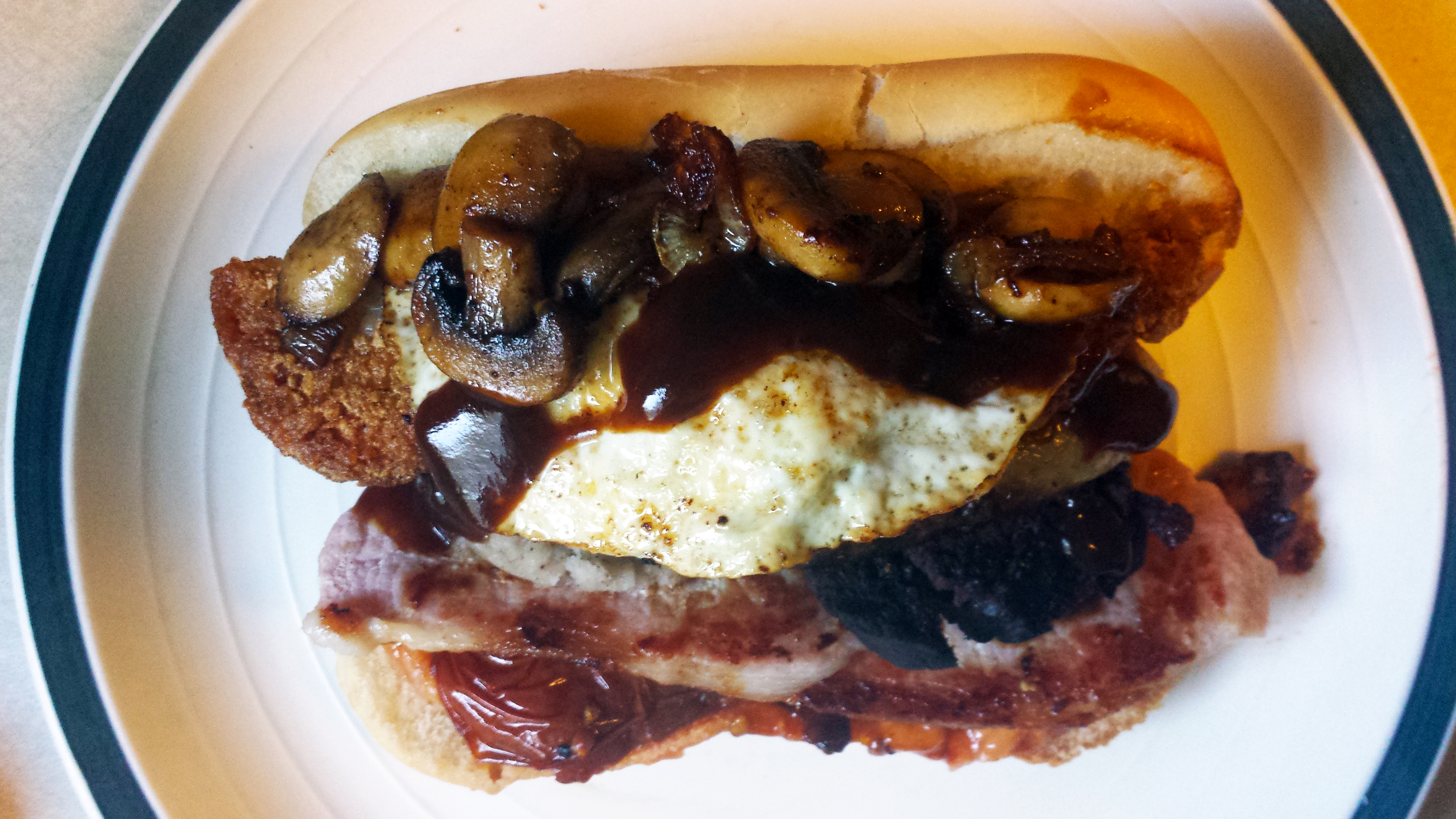







Recent Comments